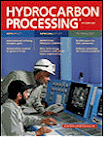Liquid product like Chemical, condensate, etc is commonly stored in fixed roof vertical cylindrical tank. Inert gas blanketing system is provided to avoid air and moisture contact and contaminate liquid product. Liquid movement by content filling (pump-in) or emptying (pump out) and weather changes (ambient heating or cooling) will results internal pressure increase (overpressure) or decrease (vacuum) in the tank. Thus, an overpressure and vacuum protecting system providing inbreathing or outbreathing gas is provided to maintain a constant pressure in the tank.
There are several recommended practice (RP) and standard (STD) are available to guide engineers in designing and specifying venting / relief load from a storage tank.
- API Std 2000 "Venting Atmospheric and Low-Pressure Storage Tanks"
- ISO 28300 "Petroleum. petrochemical and natural gas industries - Venting Atmospheric and Low-Pressure Storage Tanks"
- EN 14015 "Specification for the design and manufacture of site built, vertical, cylindrical, flat-bottomed, above ground, welded, steel tanks for the storage of liquids at ambient temperature and above "
Recommended :Tips on Succession in FREE Subscription
Subscribes to FREE Hydrocarbon Processing
 In determining normal tank venting rate, API STD 2000, (edition 1999) allows designer to estimate tank venting rate from a table. Siddhartha has presented an equation to predict tank venting based on simple correlation, as discussed in " Tank Normal Venting Rate Estimation Using Siddhartha Equation". JoeWong has further proposed a new correlation as discussed in "Tank Thermal Breathing - Proposed Equation Correlate API Std 2000 Data" with better accuracy.
In determining normal tank venting rate, API STD 2000, (edition 1999) allows designer to estimate tank venting rate from a table. Siddhartha has presented an equation to predict tank venting based on simple correlation, as discussed in " Tank Normal Venting Rate Estimation Using Siddhartha Equation". JoeWong has further proposed a new correlation as discussed in "Tank Thermal Breathing - Proposed Equation Correlate API Std 2000 Data" with better accuracy.
The methodology in determining normal inbreathing and outbreathing rate are different between API Std 2000 and ISO 28300 / EN14015. Groth Corporation, a well known Pressure-Vaccum relief valve manufacture has conducted a study to compare the API Std 2000 and ISO 28300 / EN14015. A few differences are identified :
Subscribes to FREE Hydrocarbon Processing
The methodology in determining normal inbreathing and outbreathing rate are different between API Std 2000 and ISO 28300 / EN14015. Groth Corporation, a well known Pressure-Vaccum relief valve manufacture has conducted a study to compare the API Std 2000 and ISO 28300 / EN14015. A few differences are identified :
API STD 2000
- Full vacuum through 1.034 barg
- Aboveground tanks for liquid petroleum or petroleum products and aboveground and underground refrigerated storage tanks
- Fixed roof tanks
- Tank volumes up to 28,618m3
- No insulation factor considered for regular venting (emergency only)
EN 14015
- -20 mbar through 500 mbar
- Non-refrigerated tanks
- Fixed roof tanks (with or without internal floating roofs)
- No limit on tank volume
- Insulation considered for regular and emergency venting
ISO 28300
- Full vacuum through 1.034 barg
- Aboveground tanks for liquid petroleum or petroleum products and aboveground and underground refrigerated storage tanks
- Fixed roof tanks
- No limit on tank volume
- Insulation considered for regular and emergency venting
One of the interesting findings in the study was the normal inbreathing and outbreathing comparison betweeen API STD 2000 and ISO 28300/EN 14015.
Details can be found in " Introduction and ISO 28300 Presentation". Above study was comparing API STD 2000, revision 1999 and latest ISO 28300 / EN 14015. API has recently released latest API STD 200, last NOV 2009. One of the main changes was synchronizing methodology between API STD 2000 rev. Nov 2009 and latest ISO 28300 / EN 14015.
Opinions
Previous method used in API STD 2000 still maintain in Annex A as "Alternative Calculation of normal venting requirements". This annex provides a calculation approach that may be used to design protection systems for the normal venting requirement of petroleum storage tank.
Above finding indicates minor difference in outbreathing rate between API STD 2000 and ISO 28300 / EN 14015. Both methods are acceptable for estimating outbreathing (in main text and annex A). However, present inbreathing method (as in annex A) consistently lower compare to revised method. It is always take extra precaution when you used annex A for estimating inbreathing rate.
You may be working on ongoing project priors to revision of API STD 2000 (NOV 2009). Following standard implementation spirit, you may continue to use old revision. However, it is always advisable to refer to latest API STD 2000 from safety and integrity aspect.
You may work on revamping or debottlenecking of existing plant, extra precaution shall be taken. Whenever you have modification or new requirement to existing tank, you may have to comply to latest API STD 2000 (NOV 2009) even thought your existing tank was designed and fabricated to old revision of API STD 2000.
You may work on revamping or debottlenecking of existing plant, extra precaution shall be taken. Whenever you have modification or new requirement to existing tank, you may have to comply to latest API STD 2000 (NOV 2009) even thought your existing tank was designed and fabricated to old revision of API STD 2000.
Related Post
- Tank Normal Venting Rate Estimation Using Latest Method As in API Std 2000
- Tank Thermal Breathing - Proposed Equation Correlate API Std 2000 Data
- Tank Normal Venting Rate Estimation Using Siddhartha Equation
- PSV for Shell-and-Tube HEX Tube Side Overpressure Protection against External Fire Attack ?
- Should we consider JET FIRE for Pressure Relief Valve (PSV) load determination ?
- Protective Measures against FIRE other than Pressure Relief Device (PRD)
- Extra Caution When Eliminating Overpressure by Fire Attacks


No comments:
Post a Comment